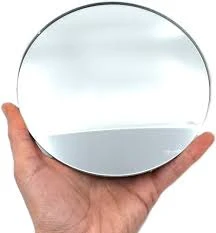

The World of Patterned Glass Manufacturing A Blend of Art and Technology
Patterned glass, known for its unique aesthetic and versatile applications, has become a pivotal element in modern architecture and design. The manufacturing of patterned glass is an intricate process that melds art and technology, allowing designers and architects to create mesmerizing spaces filled with light, texture, and depth. This article delves into the world of patterned glass manufacturers, exploring the techniques used, the trends emerging in the industry, and the significant roles these manufacturers play in construction and decoration.
Techniques of Manufacturing Patterned Glass
Patterned glass is typically produced through a variety of techniques, each yielding distinct styles and finishes. The most common methods include rolling, pressing, and casting.
1. Rolling In this method, molten glass is rolled between two patterned rollers. As the glass cools, it takes on the texture of the roller, resulting in beautiful, textured sheets. This technique allows manufacturers to create continuous patterns, making it ideal for large-scale projects.
2. Pressing This involves pressing molten glass into a mold to create intricate designs. Pressed glass can showcase a wide range of patterns, from simple textures to complex relief designs. As a result, manufacturers can offer varied patterns to suit different aesthetic demands.
3. Casting Casting involves pouring molten glass into a mold, where it takes on the mold's shape and texture. This method allows for more artistic freedom and uniqueness, as intricate designs can be achieved that are not possible with rolling or pressing.
4. Etching and Sandblasting These secondary processes create surface textures and patterns through physical abrasion or chemical treatment. They enable manufacturers to add custom designs, logos, or even intricate illustrations to the glass’s surface, enhancing its artistic appeal.
Trends in Patterned Glass Design

The patterned glass market is continuously evolving, influenced by architectural trends and consumer preferences. One of the prominent trends is the move toward sustainable manufacturing practices. Many manufacturers are now focusing on reducing waste and energy consumption during production, using recycled materials when possible. This commitment to sustainability not only attracts eco-conscious consumers but also positions manufacturers competitively in a market increasingly driven by environmental concerns.
Another trend is the integration of smart glass technology. Patterned glass is now being designed to incorporate various functionalities, such as light control and thermal insulation. This innovation not only enhances the glass's aesthetic appeal but also its practicality, making it a preferred choice for architects looking to create smart buildings.
Personalization is also gaining traction in the patterned glass sector. Consumers desire unique designs that reflect their personal style or brand identity. Manufacturers are responding with custom pattern options, allowing clients to collaborate on unique designs that cater to specific requirements, thereby fostering a deeper connection between the product and the user.
The Role of Patterned Glass Manufacturers
Patterned glass manufacturers play a crucial role in the broader construction and design industries. They not only supply essential materials used in building projects but also collaborate closely with architects and designers to bring visions to life. This collaborative effort ensures that the final product is not only aesthetically pleasing but also functional and in harmony with the surrounding environment.
Moreover, these manufacturers are at the forefront of technological advancements in glass production. By investing in research and development, they are able to create innovative solutions that push the boundaries of design. This commitment to progress ensures that patterned glass remains a relevant and sought-after material in modern architecture.
Conclusion
The world of patterned glass manufacturing is a fascinating intersection of artistry and technology. As manufacturers embrace sustainable practices, smart technologies, and customization, they are transforming the landscape of architecture and interior design. The beauty and versatility of patterned glass continue to inspire architects, designers, and homeowners alike, solidifying its place as a staple in contemporary design. As the industry grows and evolves, the future of patterned glass is undoubtedly bright, paving the way for even more innovative creations and stunning spaces.